Septoplasty in Marbella
Search and Compare the Best Clinics and Doctors at the Lowest Prices for Septoplasty in Marbella

Find the best clinics for Septoplasty in Marbella
With Medijump you can browse 2 facilities offering Septoplasty procedures in Marbella. The cheapest price available is $1,612 in Barcelona
Septoplasty in Spain
Price: $ 1,612
Septoplasty in Barcelona
Price: $ 1,612
Septoplasty in Ibiza
Price: $ 2,348
Romania offers the best prices Worldwide
Price: $ 404
Marbellia Clinic, located in Calle del Mediterraneo, Marbella, Spain offers patients Septoplasty procedures among its total of 26 available procedures, across 2 different specialties. The cost of a Septoplasty procedure starts from £2,420, whilst the national average price is approximately £2,765. All procedures and treatments are undertaken by just a small team of specialists, with 3 in total at the Clinic, and they have multiple recognized accreditations, including: EURAPS - European Association of Plastic SurgeonsESPRAS - European Society of Plastic, Reconstructive and Aesthetic SurgerySECPRE - Sociedad Española de Cirugía Plástica, Reparadora y EstéticaSEF - Sociedad Española De FertilidadSEGO - Sociedad Española de Ginecología y Obstetricia
Hospital Ceram, located in Calle del Mediterraneo, Marbella, Spain offers patients Septoplasty procedures among its total of 71 available procedures, across 15 different specialties. Currently, there's no pricing information for Septoplasty procedures at Hospital Ceram, as all prices are available on request only, whilst the national average price is approximately $3,523. There are many specialists available at the Hospital, with 15 in total, and they have multiple recognized accreditations, including: SELMQ - Sociedad Española de Láser Médico QuirúrgicoSEME - Sociedad Española de Medicina EstéticaSEMCC - Sociedad Española de Medicina y Cirugía CosméticaSECPRE - Sociedad Española de Cirugía Plástica, Reparadora y EstéticaSEF - Sociedad Española De FertilidadSEP - Excellence in Private HealthASRM - American Society for Reproductive MedicineAECEP - Asociación Española de Cirugía Estética Plástica
Compare Before & After Photos of _procedure_photos.phpSeptoplasty
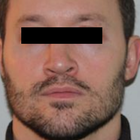
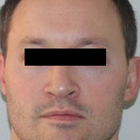
Front view

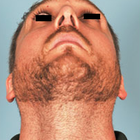
Front view
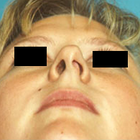
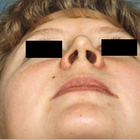
Front view
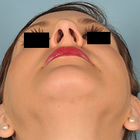

Front view
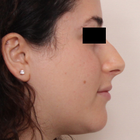
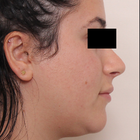
Full-side view
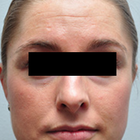
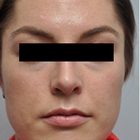
Front view
WHY US?
At Medijump, we're making medical easy. You can search, compare, discuss, and book your medical all in one place. We open the door to the best medical providers worldwide, saving you time and energy along the way, and it's all for FREE, no hidden fees, and no price markups guaranteed. So what are you waiting for?

Free

Best Price

Widest Selection

Risk-Free
What you need to know about Septoplasty in Marbella

A septum is a bone and cartilage that separates the nasal cavity of the nose. When your nasal septum is off-center, crooked, or moved to one side of your nose, it is a condition known as a deviated septum and can make breathing difficult. To correct this condition, you may need to undergo Septoplasty, where your septum will be straightened to allow better airflow through your nose. This surgery is the only way to fix a deviated septum. However, septoplasty may also be performed to treat long-term sinusitis, remove nasal polyps, or treat other conditions that block the nasal airways. Sometimes, surgeons also recommend this surgery to stop recurrent nosebleeds and facial pains. For conditions other than deviated septum, surgeons often only recommend septoplasty after ruling out other treatments.
What does a Septoplasty Procedure Involve?
A deviated septum is common, but when the condition is severe, it can block one side of your nose and reduce airflow. It can also contribute to crusting or bleeding. If you experience difficulty breathing through your nose that significantly affects your life, you may want to consider septoplasty. Before the surgery, your doctor will review the details of the surgery and ask you to complete some routine tests, such as a blood test, electrical heart tracing, or X-ray. Be sure to tell your doctor if you have any possible allergies. To prepare for the procedure, you may need to stop taking certain medications at least two weeks before the surgery because they can increase your risk of excessive bleeding and the medications include aspirin, ibuprofen, and other blood-thinners.
Septoplasty can be carried out under local anesthesia or general anesthesia. If you have the surgery under local anesthesia, you should not eat or drink anything after midnight the night before the procedure. Not eating and drinking will prevent you from vomiting and choking if the anesthesia nauseates you during surgery. Your surgeon will start the surgery by making an incision on one side of your nose to access the septum. They will then lift the mucosa lining that covers the cartilage and bone. Next, they will reshape the cartilage and bone to move the deviated septum to the correct position. Extra pieces of bone or cartilage that make barriers will be removed. Then, they will reposition the mucous membrane. You may need stitches to hold the septum and membrane in place. Soft silicone splints are sometimes inserted inside the nostrils to support the septum. The whole procedure takes between 30 to 90 minutes to complete.
How Long Should I Stay in Marbella for a Septoplasty Procedure?
Septoplasty is an outpatient procedure, which means you will likely go home on the same day of the surgery after the anesthesia has worn off unless major complications arise. However, you should stay in the Marbella for 3-4 days for the initial recovery and follow-up checkups. If your surgeon places splints in the nose, they will be removed within seven days. You may return home when your surgeon allows you as long as there is no complication.
What's the Recovery Time for Septoplasty Procedures in Marbella?
You may feel drowsy for a few hours following the surgery and you may also feel pain. However, your surgeon will prescribe medication to help with the pain. Some congestion and bleeding can occur after you are discharged from the hospital as your body recovers, but these symptoms should be gone in 2 weeks. The recovery period varies from one person to another. In general, you should be able to return to work within a few days, but you should allow at least three weeks before going back to your full normal routine. You should also limit your physical activities such as exercise for several weeks to minimize swelling and speed up healing because intense physical activities can increase your blood pressure and lead to bleeding.
What sort of Aftercare is Required for Septoplasty Procedures in Marbella?
Your doctor will give you post-operative care instructions, which you will need to follow, The wound on your nose will heal fairly quickly, and your breathing will improve shortly after the procedure. For a quicker recovery, you may need to elevate your head at night to keep the swelling down, wear a button-up shirt so you do not need to pull clothing over your head, and do not blow your nose for at least two to three days after surgery. Avoid drinking alcohol, smoking tobacco, returning to work too soon, strenuous activities, and being in a crowd where people are smoking or coughing.
What's the Success Rate of Septoplasty Procedures in Marbella?
The success rate for septoplasty is high, with up to 85% of people experiencing a significant improvement in their nasal blockage after surgery.
However, some people will require a second surgery if they are not satisfied with the results. Septoplasty is a very low-risk procedure, but you should be aware of the possible complications and side effects and these risks can include:
- Bleeding in small amounts is common, but in rare cases, excessive bleeding may occur.
- Infection can occur after septoplasty because the nose is not a sterile environment.
- Toxic shock syndrome is a very rare and life-threatening infection.
- Septal perforation is a small hole that can sometimes develop in the nasal septum during or after the surgery.
- Spinal fluid leak and it is extremely rare.
Other risks such as scarring, and altered nose shape, discoloration of the nose, a decreased sense of smell, tooth or nose numbness, and continuing symptoms are also possible. Other than following your surgeon’s aftercare instructions, keeping the nose clean and washing your hands often can reduce the risks.
Are there Alternatives to Septoplasty Procedures in Marbella?
Although most conditions of a deviated septum can only be treated by septoplasty, there are nonsurgical treatments for other nasal blockages to help you breathe better. If your nasal blockage is caused by an allergy, you may take antihistamines from your doctor or over-the-counter. In cases of bacterial infection, your doctor can prescribe antibiotics to help clear the nasal airways.
Whilst the information presented here has been accurately sourced and verified by a medical professional for its accuracy, it is still advised to consult with your doctor before pursuing a medical treatment at one of the listed medical providers
No Time?
Tell us what you're looking for and we'll reachout to the top clinics all at once
Enquire Now

Popular Procedures in Marbella
Prices Start From $1,945

Prices Start From $101

Prices Start From $192

Prices Start From $500

Recommended Medical Centers in Marbella for Septoplasty

- Interpreter services
- Translation service
- Religious facilities
- Medical records transfer
- Medical travel insurance
- Health insurance coordination
- TV in the room
- Safe in the room
- Phone in the room
- Private rooms for patients available

- Interpreter services
- Translation service
- Religious facilities
- Medical records transfer
- Medical travel insurance
- Health insurance coordination
- TV in the room
- Safe in the room
- Phone in the room
- Private rooms for patients available

- Interpreter services
- Translation service
- Religious facilities
- Medical records transfer
- Medical travel insurance
- Health insurance coordination
- TV in the room
- Safe in the room
- Phone in the room
- Private rooms for patients available

- Interpreter services
- Translation service
- Religious facilities
- Medical records transfer
- Medical travel insurance
- Health insurance coordination
- TV in the room
- Safe in the room
- Phone in the room
- Private rooms for patients available
Septoplasty in and around Marbella
About Marbella
Marbella is a city and a municipality located in southern Spain. Situated on the Mediterranean Sea, the city is one of the most cosmopolitan beach resorts in the country. It is particularly famous for its beaches with fine sand and clear blue water. Today, Marbella has become a preferred destination for medical tourism. The city is filled with a great variety of hospitals and clinics offering high-class services, from beauty and wellbeing to major medical treatments such as oncology and traumatology. All the private hospitals in the city now have a department that works exclusively to attract international patients. These hospitals all provide luxurious services and round the clock care. International medical tourists will feel as if they are staying in a 5-star hotel instead of a hospital. Furthermore, these hospitals are staffed with highly-skilled doctors and specialists.
Popular Parts of Madrid
Marbella’s biggest draw is its beaches, including Nagüeles Beach and El Ancón Beach, where people can sunbathe, swim, or even enjoy water sports activities. Most of the beaches are also lined with amazing beach bars to eat or drink while escaping the heat. Beyond its beaches, Marbella also has a significant historical heritage. The most popular area to visit is the old quarter (Casco Antiguo), which is packed with beautiful Andalucian and Moorish architecture, ornately painted tiles, balconies full of flowers, and narrow streets. Visitors can also find numerous churches and chapels. In the heart of the old quarter is Plaza de Los Naranjos, a square where visitors can find the city hall, restaurants and bars, renaissance architecture, and orange trees.
Transport in Madrid
Málaga Airport is the nearest airport to Marbella. It has both domestic and international flights to many cities in Europe and is serviced by numerous airlines. Those who want to get around with public transportation are provided with a network of seven local bus lines, which is relatively affordable and will get visitors too many places around the city. Taxis are available and official rates are displayed inside the licensed taxi. Visitors who stay in the downtown area can get around by foot easily since the area is fairly compact.
Visas in Madrid
Spain is a part of the Schengen Convention, meaning citizens of 62 countries, such as Australia, Canada, and the US, do not need a visa to visit and stay in Marbella for up to 90 days. Holders of passports issued by other countries not listed in the visa-free agreement need to apply and obtain a visa prior to arrival.
Weather in Madrid
Marbella experiences a Mediterranean climate with about 320 sunshine days each year. The summer in the city is hot, while the winter is typically mild. During the hottest months, July and August, the temperatures can soar to 30°C, but the breeze of the Mediterranean Sea will make the hot temperatures bearable. December to January is somewhat rainier than the rest of the year.
Additional Info
- Local Currency: The local currency used in Marbella is the Euro. 1 EUR converts to approx. 1.12 USD.
- Money & Payments: ATMs are widely available around Marbella. Credit cards are accepted in most businesses and tipping is expected in some places.
- Local Language: The Spanish spoken in Marbella is Andalusian Spanish. English is widely spoken, especially in tourist areas.
- Local Culture and Religion: Christianity is the largest religion in Marbella. However, other religions are also freely practiced.
- Public Holidays: New Year's Day, Andalucía Day, San José, Spanish National Day, and Christmas Day are some of the most important public holidays in the city.
Popular Searches
- Plastic Surgery in Thailand
- Dental Implants in Thailand
- Hair Transplant in Thailand
- Breast Augmentation Thailand
- Gastric Sleeve in Thailand
- Gender Reassignment Surgery in Thailand
- Laser Hair Removal in Bangkok
- Botox in Bangkok
- Dermatology in Bangkok
- Breast Augmentation in Bangkok
- Coolsculpting in Bangkok
- Veneers in Turkey
- Hair Transplant in Turkey
- Rhinoplasty in Turkey
- Stem Cell Therapy in Mexico
- Rhinoplasty in Mexico
- Liposuction in Mexico
- Coolsculpting in Tijuana
- Rhinoplasty in Korea
- Scar Removal in Korea
- Gastric Sleeve in Turkey
- Bone Marrow Transplant in India
- Invisalign in Malaysia
- Plastic Surgery in the Dominican Republic
- Tummy Tuck in the Dominican Republic
- Plastic and Cosmetic Surgery in Poland
- Rhinoplasty in Poland
- Hair Implant in Poland
- Dental Implants in Poland
- IVF in Turkey

